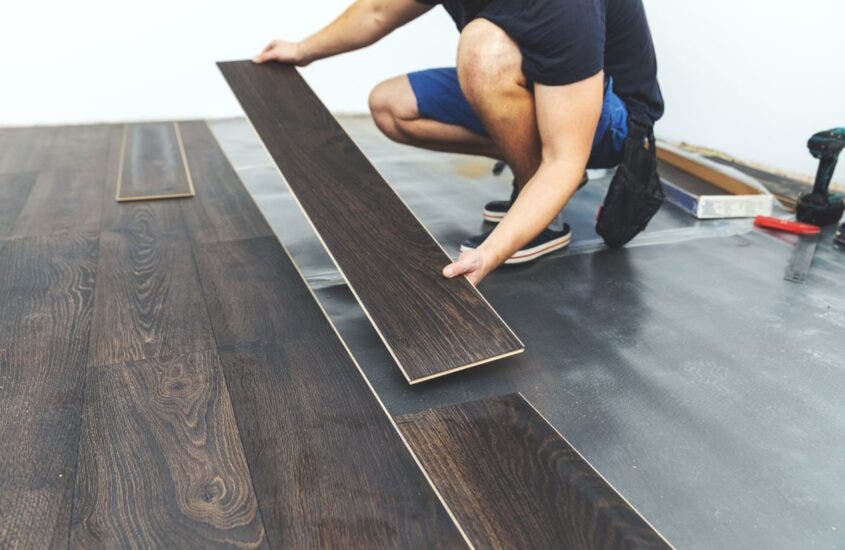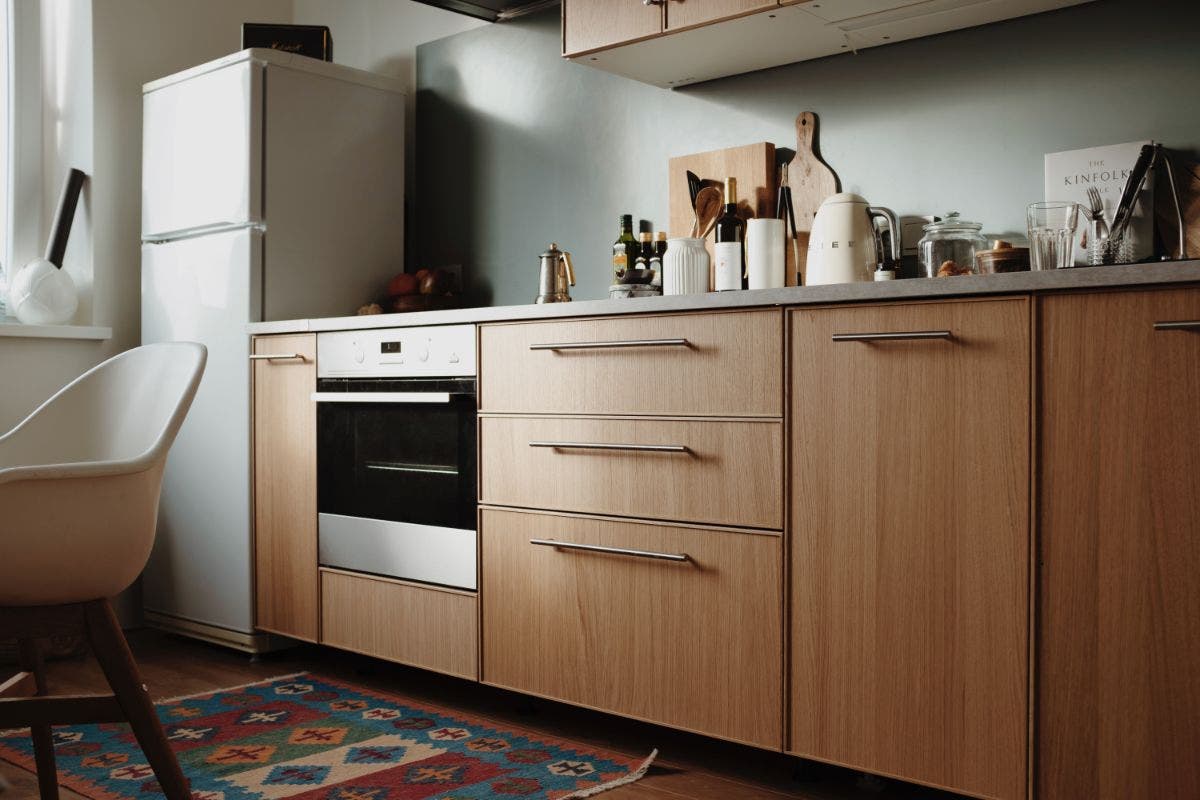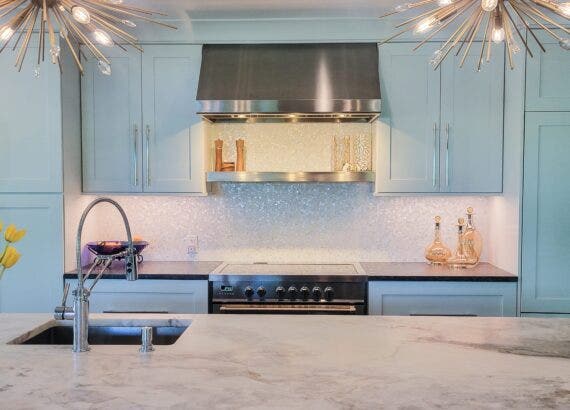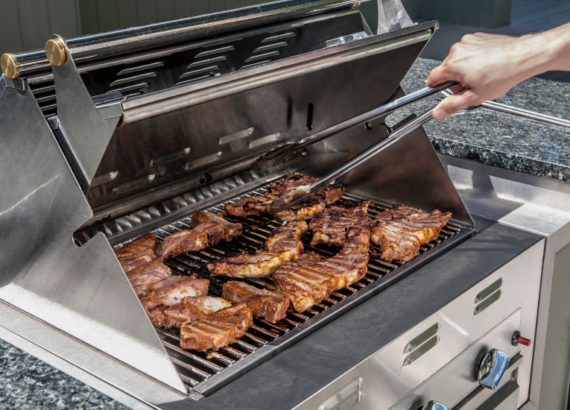Flooring Or Cabinets: Which To Install First (Everything You Need To Know)

When you remodel your kitchen you may be confused about which to install first, flooring or cabinets. There is no one size fits all answer and a lot depends on the type of flooring, your kitchen design and your future plans.
We take a look at some different types of flooring and whether they should be installed before or after your kitchen cabinets.
Table of Contents
Should Tile Floors Be Installed Before Cabinets?
There are two approaches to fitting tile floors in your kitchen. You can actually fit them before or after your cabinets, it really depends on you.
To fit them before the cabinets you will need more square footage of tiles as you will be covering the entire kitchen floor. Bear in mind that the tiles beneath the cabinet will not be seen.
However, if you are paying a lot for your floor tiles and want them to stay in place should you ever want to change your kitchen cabinets then this is a good option.
You just need to have confidence in your installer that they will not damage the tiles during the fitting of the cabinets.
If you are doing the cabinet installation yourself, you will obviously be very cautious about how you proceed with the work.
If you install the kitchen cabinets first you will need less square footage to cover the floor. Instead the tile fitters will cut the tiles around the cabinets and any other details.
This option will cost you less in materials but may cost more in labor as there will be more cutting involved. It will also mean that the flooring will not accommodate a different layout in your kitchen if you decide to change your cabinets at a later date.
Do You Install Hardwood Flooring Or Cabinets First?
In order to achieve standard cabinet height it is recommended that you install hardwood flooring before fitting your cabinets. This means that 100% of the floor is covered and everything will be the same height and level.
If you are not intending to change your kitchen design for a long time you could use a cheaper alternative underneath the cabinets to save money on the more expensive hardwood flooring.
As long as they are the same height it should not make a difference.
However, most people see hardwood flooring as a long term investment while kitchen design trends come and go.
To save having to redo a costly hardwood floor if you update your kitchen design in the future it is worth laying the flooring first and having 100% coverage.
Many people may be concerned about laying hardwood flooring and then installing cabinets and appliances because of the potential for damage or scratches.
However, as long as you lay down good protection on your new flooring, such as cardboard or moving blankets, it should be fine.
It is good practice not to put the finish on your hardwood flooring until after all the cabinets and appliances have been fitted.
Then if there are any gouges or scratches they can be filled and sanded down before the finish is applied.
Can Cabinets Go On A Floating Floor?

A floating floor is one that is not directly attached to the subfloor and instead ‘floats’ above it. This type of flooring mostly comes in tongue and groove planks. It can be vinyl, laminate or engineered flooring.
It is not a good idea to put this type of flooring underneath kitchen cabinets. This is because as they are not permanently fixed to the subfloor they can expand and contract.
If they are weighed down by the kitchen cabinets they cannot move and this can cause warping and gaps to appear between the planks.
When you are using any kind of floating flooring it is advisable to install your kitchen cabinets first and then the floating floor.
Of course, it would be a lot easier to lay the floating floor first when you have an empty and usually regular shaped room to work in.
Once the kitchen cabinets are installed you will need to maneuver around them and cut the floating floor to fit around details and cover gaps with shoe moldings. However, as tempting as it may be it would be a mistake.
The floating floor, regardless of the material it is made from, needs to be able to expand and contract with changing temperatures and humidity.
As well as this issue if you ever wanted to change the flooring you would have a difficult time getting the planks that run under the cabinets out.
By installing this type of flooring after the cabinets are fitted you are also saving money on square footage of materials.
And remember installing cabinets after laying flooring always runs the risk of scratches and damage to the floor by cabinet or appliance installation.
When To Fit Flooring Before Cabinets
The longevity of your kitchen design may influence your decision to fit flooring before the kitchen cabinets.
If you think you may change the style of your kitchen cabinets before you change your floor then laying the floor first gives you that flexibility.
You will have 100% coverage and will not be constrained by the footprint of your current kitchen layout.
If for some reason the total height of your flooring needs to be elevated you can fit the flooring before the cabinets. This could be due to a construction anomaly or the odd height of an appliance.
When you fit flooring first you will achieve standard countertop height. Be mindful of checking the levels of the cabinets and adjust the legs accordingly if needed or add some shims.
In the majority of cases it makes sense to fit the floor before installing the kitchen cabinets unless it is a floating floor.
Just make sure the flooring is covered with cardboard and/or moving blankets to protect it during cabinet and appliance installation.
When You Should Fit Cabinets Before Flooring
Some types of flooring should not be fitted beneath kitchen cabinets and in these cases the cabinets should be installed first.
This particularly applies to floating floors which need to be able to move with the house, expanding and contracting with changes in temperature and humidity.
Floating floors include laminate, vinyl, and engineered flooring and are simply slotted together with a tongue and groove fixture.
If you have achieved the standard cabinet height of 34-36 inches, then you can lay your flooring after you have installed the kitchen cabinets.
For those who are concerned about their flooring being damaged by the installation of the kitchen cabinets then fitting them first is a good solution. The flooring can then be laid afterward and cut around the detailing.
This method will use less materials but be aware that it is a lot more work and may cost more due to the amount of cutting and fitting that will be needed.
Final Thoughts
Each kitchen remodel will have its own features and a lot depends on the type of flooring you choose to install. In most cases, the flooring should go in first followed by the cabinets. The only major exceptions are floating floors.







Comments are closed.